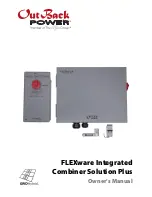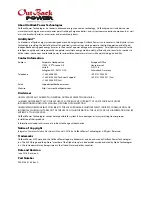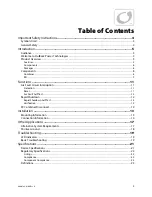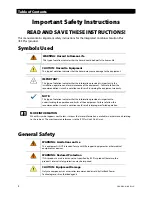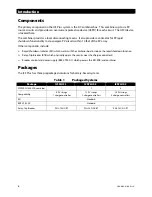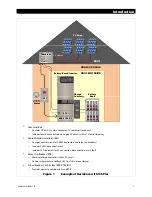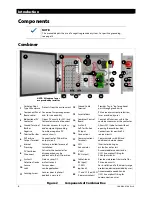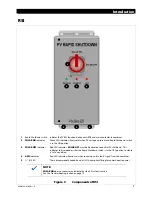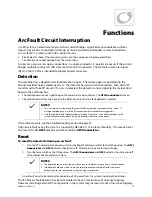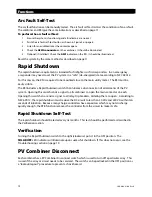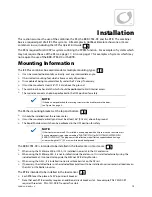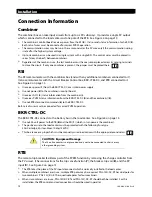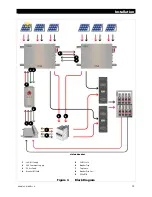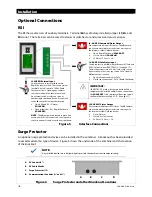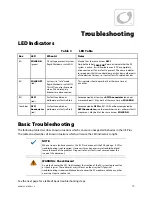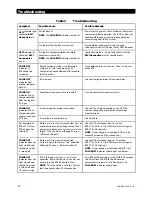
Functions
12
900-0184-01-00 Rev A
Arc Fault Self-Test
The arc fault function can be manually tested. The arc fault self-test mimics the conditions of an arc fault.
The combiner and RSI give the same indications as described on page 11.
To perform the arc fault self-test:
1.
Ensure the system is functioning and all indicators are normal.
2.
Push the arc fault self-test button as shown in Figure 2 on page 8.
3.
Listen for an audible click as the contactor opens.
4.
Check the
AFCI Annunciator
on the combiner. It should be illuminated.
5.
Optional (if installed): Check the
AFCI
indicator on the RSI. It should be illuminated.
Reset the system by the same method as described on page 11.
Rapid Shutdown
The rapid shutdown requirement is intended for firefighters or first responders. In an emergency,
a responder may need to set the PV system in a “safe” (de-energized) state according to NEC 690.12.
For this reason, the RSI is required to be mounted close to the main utility meter. The RSI must be
easily visible.
The RSI includes a Rapid Shutdown switch that initiates a disconnection of all elements of the PV
system. Opening this switch sends a signal to all combiners to open the main contactor on each.
Opening this switch also sends a signal to all relay-trip breakers, ordering them to open. According to
NEC 690.12, the rapid shutdown must reduce the DC circuit to less than 30 Vdc and 240 VA within ten
seconds of initiation. Because many charge controllers have capacitors which may not discharge
quickly enough, the RTB function removes the controller from the circuit to make it safe.
Rapid Shutdown Self-Test
The rapid shutdown should be tested every six months. This test should be performed as described in
the Verification section.
Verification
Turning the Rapid Shutdown switch to the right (clockwise) puts it in the OFF position. The
SOLAR OFF
LED indicator will illuminate upon successful shutdown. If this does not occur, see the
Troubleshooting section on page 19.
PV Combiner Disconnect
Each combiner has a PV Combiner Disconnect switch which is used to turn off a particular array. This
is used if the array or circuit needs to be serviced. The switch can be padlocked in the OFF position as
a “lockout/tagout” procedure to prevent a shock hazard.

